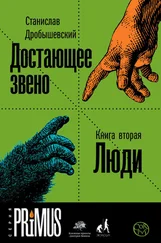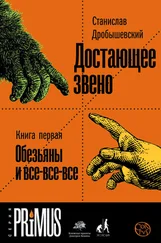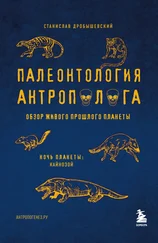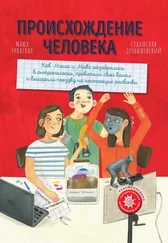Steemans P., H-riss- le A. et Bozdogan N. Ordovician and Silurian cryptospores and miospores from southeastern Turkey // Review of Palaeobotany and Palynology, 1996, V.93, № 1-4, pp.35-76.
Strother P. K., Al-Hajri S. et Traverse A. New evidence for land plants from the lower Middle Ordovician of Saudi Arabia // Geology, 1996, V.24, pp.55-58.
Szaniawski H. The earliest known venomous animals recognized among conodonts // Acta Palaeontologica Polonica, 2009, V.54, № 4, pp.669-676.
Wellman C.H. New evidence for the nature of earliest land plants // Polen (antes an. Asoc. Palinol. Leng. Esp.), 2004, V.14, pp.135-136.
Wellman Ch.H., Osterloff P.L. et Mohiuddin U. Fragments of the earliest land plants // Nature, 2003, V.425, № 6955, pp.282-285.
Каратаюте-Талимаа В.Н., Новицкая Л.И., Розман Х.С., Содов Ж. Mongolepis – новый род эласмобранхий из нижнего силура Монголии // Палеонтологический журнал, 1990, № 1, сс.76-86.
Новицкая Л.И. Морфология древних бесчелюстных (гетеростраки и проблема связи бесчелюстных и челюстноротых позвоночных) // Труды палеонтологического института, Т.196, М., Наука, 1983 г., 184 с.
Новицкая Л.И. Древнейшие бесчелюстные СССР. Гетеростраки: циатаспиды, амфиаспиды, птераспиды // Труды палеонтологического института, Т.219, М., Наука, 1986, 161 с.
Andreev P., Coates M., Karatajute-Talimaa V., Shelton R., Cooper P. et Sansom I. Elegestolepis and its kin, the earliest monodontode chondrichthyans // Journal of Vertebrate Paleontology, 2017, V.37, № 1, p.e1245664.
Boyce C.K. How green was Cooksonia? The importance of size in understanding the early evolution of physiology in the vascular plant lineage // Paleobiology, 2008, V.34, № 2, pp.179-194.
Briggs D.E., Siveter D.J., Siveter D.J., Sutton M.D. et Legg D. Tiny individuals attached to a new Silurian arthropod suggest a unique mode of brood care // Proceedings of the National Academy of Sciences, USA, 2016, V.113, № 16, pp.4410-4415.
Brugghen van der W., Schram F.R. et Martill D.M. The fossil Ainiktozoon is an arthropod // Nature, 1997, V.385, № 6617, pp.589-590.
Choo B., Zhu M., Zhao W., Jia L. et Zhu Y. The largest Silurian vertebrate and its palaeoecological implications // Scientific Reports, 2014, V.4, p.5242.
Choo B., Zhu M., Qu Q., Yu X., Jia L. et Zhao W. A new osteichthyan from the late Silurian of Yunnan, China // PLOS One, 2017, V.12, № 3, p.e0170929.
Cunningham J.A., Ru-cklin M., Blom H., Botella H. et Donoghue P.C.J. Testing models of dental development in the earliest bony vertebrates, Andreolepis and Lophosteus // Biology Letters, 2012, V.8, pp.833-837.
Edwards D. A late Silurian flora from the Lower Old Red Sandstone of south-west Dyfed // Palaeontology, 1979, V.22, № 1, pp.23-52.
Edwards D. et Fanning U. Evolution and environment in the late Silurian-early Devonian: the rise of the pteridophytes // Philosophical Transactions of the Royal Society B, 1985, V.309, № 1138, pp.147-165.
Edwards D. et Feehan J. Records of Cooksonia-type sporangia from late Wenlock strata in Ireland // Nature, 1980, V.287, № 5777, pp.41-42.
Fanning U., Edwards D. et Richardson J.B. Further evidence for diversity in late Silurian land vegetation // Journal of the Geological Society, 1990, V.147, № 4, pp.725-728.
Graham L.E., Wilcox L.W., Cook M.E. et Gensel P.G. Resistant tissues of modern marchantioid liverworts resemble enigmatic Early Paleozoic microfossils // Proceedings of the National Academy of Sciences, USA, 2004, V.101, № 30, pp.11025-11029.
Graham L.E., Cook M.E., Hanson D.T., Pigg K.B. et Graham J.M. Structural, physiological, and stable carbon isotopic evidence that the enigmatic Paleozoic fossil Prototaxites formed from rolled liverwort mats // American Journal of Botany, 2010, V.97, № 2, pp.268-275.
Haug C., Briggs D.E.G., Mikulic D.G., Kluessendorf J. et Haug J.T. The implications of a Silurian and other thylacocephalan crustaceans for the functional morphology and systematic affinities of the group // BMC Evolutionary Biology, 2014, V.14, № 159, p.159.
Hueber F. M. Rotted wood – alga – fungus: the history and life of Prototaxites Dawson 1859 // Review of Palaeobotany and Palynology, 2001, V.116, pp.123-158.
Jeram A.J. Phylogeny, classification and evolution of Silurian and Devonian scorpions // Proceedings of the 17th European Colloquium of Arachnology, Edinburgh 1997. Ed.: P.A. Selden. 1998.
Jeram A.J., Selden P.A. et Edwards D. Land animals in the Silurian: arachnids and myriapods from Shropshire, England // Science, 1990, V.250, № 4981, pp.658-661.
Kenrick P. et Crane P.R. The origin and early evolution of plants on land // Nature, 1997, V.389, № 6646, pp.33-39.
Kjellesvig-Waering E.N. Brontoscorpio anglicus: a gigantic Lower Paleozoic scorpion from central England // Journal of Paleontology, 1972, V.46, № 1, pp.39-42.
Lamsdell J.C., Briggs D.E.G., Liu H., Witzke B.J. et McKay R.M. The oldest described eurypterid: a giant middle Ordovician (Darriwilian) megalograptid from the Winneshiek Lagerst-tte of Iowa // BMC Evolutionary Biology, 2015, V.15, p.169.
Lang W.H. et Cookson I.C. On a flora, including vascular land plants, associated with Monograptus, in rocks of Silurian age, from Victoria, Australia // Philosophical Transactions of the Royal Society of London, Series B, 1935, V.224, № 517, pp.421-449.
Libert-n M., Kva-ek J., Bek J., -rsk- V. et -torch P. Sporophytes of polysporangiate land plants from the early Silurian period may have been photosynthetically autonomous // Nature Plants, 2018, V.4, № 5, pp.269-271.
Qiu Y.L., Li L., Wang B., Chen Z., Knoop V., Groth-Malonek M., Dombrovska O., Lee J., Kent L., Rest J., Estabrook G.F., Hendry T.A., Taylor D.W., Testa C.M., Ambros M., Crandall-Stotler B., Duff R.J., Stechi M., Frey W., Quandt D. et Davis C.C. The deepest divergences in land plants inferred from phylogenomic evidence // Proceedings of the National Academy of Sciences, USA, 2006, V.103, № 42, pp.15511-15516.
Rahman I.A., Thompson J.R., Briggs D.E.G., Siveter D.J., Siveter D.J. et Sutton M.D. A new ophiocistioid with soft-tissue preservation from the Silurian Herefordshire Lagerst-tte, and the evolution of the holothurian body plan // Proceedings of the Royal Society B, 2019, V.286, № 1900, pp.20182792.
Rickards R.B. The age of the earliest club mosses: the Silurian Baragwanathia flora in Victoria, Australia // Geological Magazine, 2000, V.137, № 2, pp.207-209.
Ritchie A. Ainiktozoon loganense Scourfield, a protochordate? from the Silurian of Scotland // Alcheringa, 1985, V.9, № 2, pp.117-142.
Schultze H.-P. et Ma-rss T. Revisiting Lophosteus Pander 1856, a primitive osteichthyan // Acta Universitatis Latviensis, 2004, V.679, pp.57-78.
Scourfield D.J. An anomalous fossil organism, possibly a new type of chordate, from the upper Silurian of Lesmahagow, Lanarkshire – Ainiktozoon loganense, gen. et sp. nov. // Proceedings of the Royal Society B, 1937, V.121, № 825, pp.533-547.
Shear W. et Selden P. Eoarthropleura (Arthropoda, Arthropleurida) from the Silurian of Britain and the Devonian of North America // Neues Jahrbuch f-r Geologie und Pal-ontologie, Abhandlungen, 1995, V.196, № 3, pp.347-375.
Taylor T.N., Taylor E.L. et Krings M. Paleobotany. The biology and evolution of fossil plants. New York, Elsevier, 2009, 1230 p.
Zhu M., Yu X. et Ahlberg P.E. A primitive sarcopterygian fish with an Eyestalk // Nature, 2001, V.410, № 6824, pp.81-83.
Читать дальше
![Станислав Дробышевский Палеонтология антрополога. Книга 1. Докембрий и палеозой [litres] обложка книги](/books/404766/stanislav-drobyshevskij-paleontologiya-antropologa-cover.webp)






![Станислав Лем - Рассказы о пилоте Пирксе. Непобедимый [сборник litres]](/books/404313/stanislav-lem-rasskazy-o-pilote-pirkse-nepobedimy-thumb.webp)
![Станислав Романов - Самая страшная книга 2020 [антология, litres]](/books/405084/stanislav-romanov-samaya-strashnaya-kniga-2020-antol-thumb.webp)



